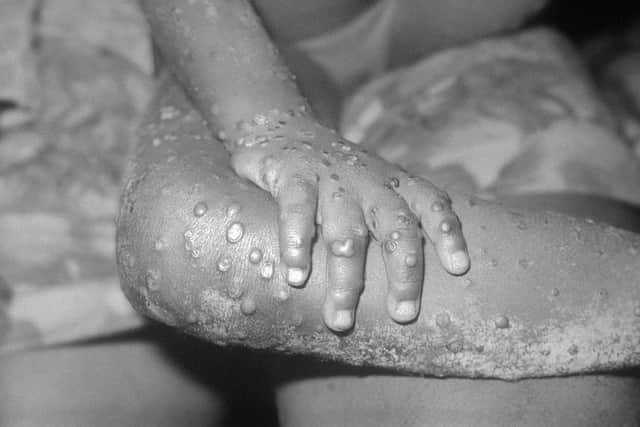What is Monkeypox? Signs and symptoms of the viral disease as several cases found in UK
and live on Freeview channel 276
The UK Health Security Agency (UKHSA) confirmed the discovery of monkeypox in the UK earlier this month, with a total of 56 cases discovered country-wide so far.
The disease is rarely identified outside of Africa, but nearly 100 cases have been confirmed across Europe, North America and Australia during May, with a further 28 suspected infections according to data collected by the World Health Organization (WHO).


Advertisement
Hide AdAdvertisement
Hide AdThe cause of the outbreak is yet to be established and there is no clear connection between people infected with the disease and a single event.
In the wake of the spread, here is everything we know about monkeypox so far and the symptoms to look out for.
What is monkeypox?
Monkeypox is a viral disease affecting rodents and primates in rainforest areas of west and central Africa, related to smallpox and sometimes transmitted to humans.
It is called monkeypox because it was first identified in laboratory monkeys.
How can you catch monkeypox?
Advertisement
Hide AdAdvertisement
Hide AdMonkeypox is usually caught from infected wild animals in parts of west and central Africa, and spread by rodents such as rats, mice and squirrels.
You can catch monkeypox if you're bitten or you touch the blood, body fluids, spots, blisters or scabs or an infected animal.
It may also be possible to catch monkeypox by eating meat from an infected animal that has not been cooked thoroughly, or by touching other products from infected animals .
How does monkeypox spread in humans?
Monkeypox can be spread through touching clothing, bedding or towels used by someone with the monkeypox rash, or by touching monkeypox skin blisters or scabs.
Advertisement
Hide AdAdvertisement
Hide AdThe coughs or sneezes of a person with the monkeypox rash can also result in transmission.
What are the symptoms of monkeypox?
The illness begins with:
- fever
- headache
- muscle aches
- backache
- swollen lymph nodes
- chills
- exhaustion
Within 1 to 3 days after the first appearance of a fever, the infected person develops a rash, often beginning on the face then spreading to other parts of the body.
Lesions progress through the following stages before falling off:
- macules
- papules
- vesicles
- pustules
- scabs
Comment Guidelines
National World encourages reader discussion on our stories. User feedback, insights and back-and-forth exchanges add a rich layer of context to reporting. Please review our Community Guidelines before commenting.
